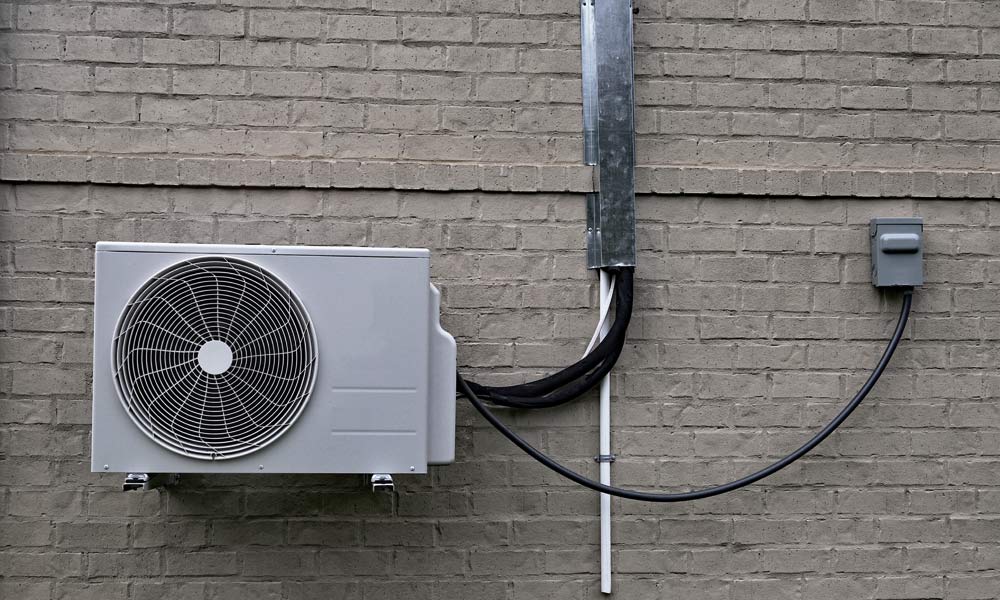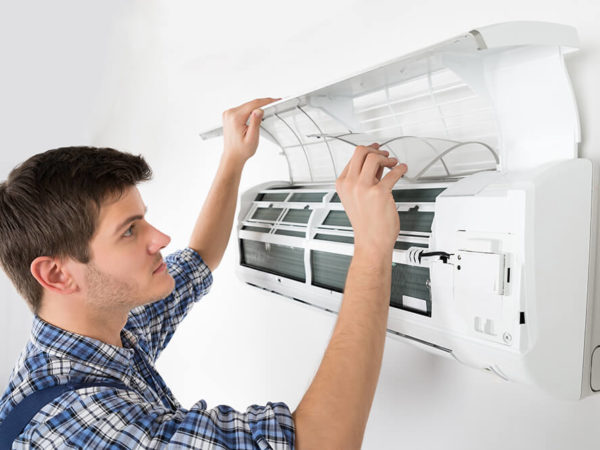Heating, ventilation, and air conditioning (HVAC) systems are vital, especially during increased heat wave situations. It helps to maintain a comfy indoor environment. Traditional HVAC systems often rely on ductwork to distribute conditioned air throughout a building. However, ductless or mini-split systems are highly efficient and flexible alternatives.
How do Ductless HVAC Systems Work?
Ductless HVAC systems consist of two main components –
- An outdoor compressor/condenser unit
- One or more indoor air-handling units (evaporators).
These components are connected by refrigerant lines and electrical cables. Unlike traditional HVAC systems that rely on a network of ducts, ductless systems deliver conditioned air directly to individual rooms.
The process begins with the outdoor unit compressing and cooling the refrigerant, which is then pumped indoors to the air-handling units. The indoor units disperse the cooled air into the designated areas, while simultaneously absorbing warm air to be sent back to the outdoor unit for cooling. This cyclical process efficiently maintains the desired temperature in each room without the energy losses often associated with ducted systems.
Remember to have the entire split system serviced regularly to avoid performance issues and HVAC repair costs.
Advantages of Ductless HVAC Systems:
- Energy Efficiency: Ductless systems offer higher energy efficiency compared to ducted systems, as they eliminate the energy losses associated with duct leaks and poor insulation. Additionally, the ability to control each indoor unit individually allows for more precise temperature regulation, further reducing energy consumption.
- Flexibility and Zoning: Ductless systems allow for easy installation and retrofitting, making them ideal for buildings without existing ductwork or where adding ducts is impractical. The zoning capability enables occupants to control temperatures independently in different rooms, optimizing comfort and energy use.
- Improved Indoor Air Quality: Traditional ducted HVAC systems can accumulate dust, allergens, and pollutants, which are then circulated throughout the building. Ductless systems, with their absence of ducts, significantly reduce the potential for airborne contaminants, improving indoor air quality.
- Quiet Operation: Ductless systems are known for their quiet operation since the noisiest components, like the compressor, are located outside.
- Cost Savings: Though the upfront cost of installing a ductless HVAC system may be higher, the long-term cost savings in energy bills and maintenance expenses often outweigh the initial investment.
Applications of Ductless HVAC Systems:
Ductless systems find extensive use in various settings:
- Residential
- Commercial
- Server Rooms and Data Centers
- Historic Buildings
Environmental Benefits:
Ductless HVAC systems contribute positively to the environment in several ways:
- Reduced Carbon Footprint: By improving energy efficiency and reducing overall energy consumption, ductless systems help lower greenhouse gas emissions, contributing to mitigating climate change.
- Refrigerant Innovations: Manufacturers are increasingly using eco-friendly refrigerants, such as R410A and R32, which have lower global warming potential (GWP) than older refrigerants like R22.
- Sustainable Cooling: In areas with hot climates, ductless systems paired with solar panels provide a sustainable cooling solution, decreasing dependence on fossil fuels.
If you are looking for heating and air near me then visit any online search engine with your current location. In Ohio, Fry Heating & Cooling is the best service with five-star ratings.
Wrap-up
As the world becomes more conscious of its environmental impact, ductless systems play a vital role in reducing carbon footprints and promoting sustainable living. Whether in residential or commercial spaces, ductless HVAC systems are a promising technology, providing a pathway to more comfortable and environmentally responsible buildings.




